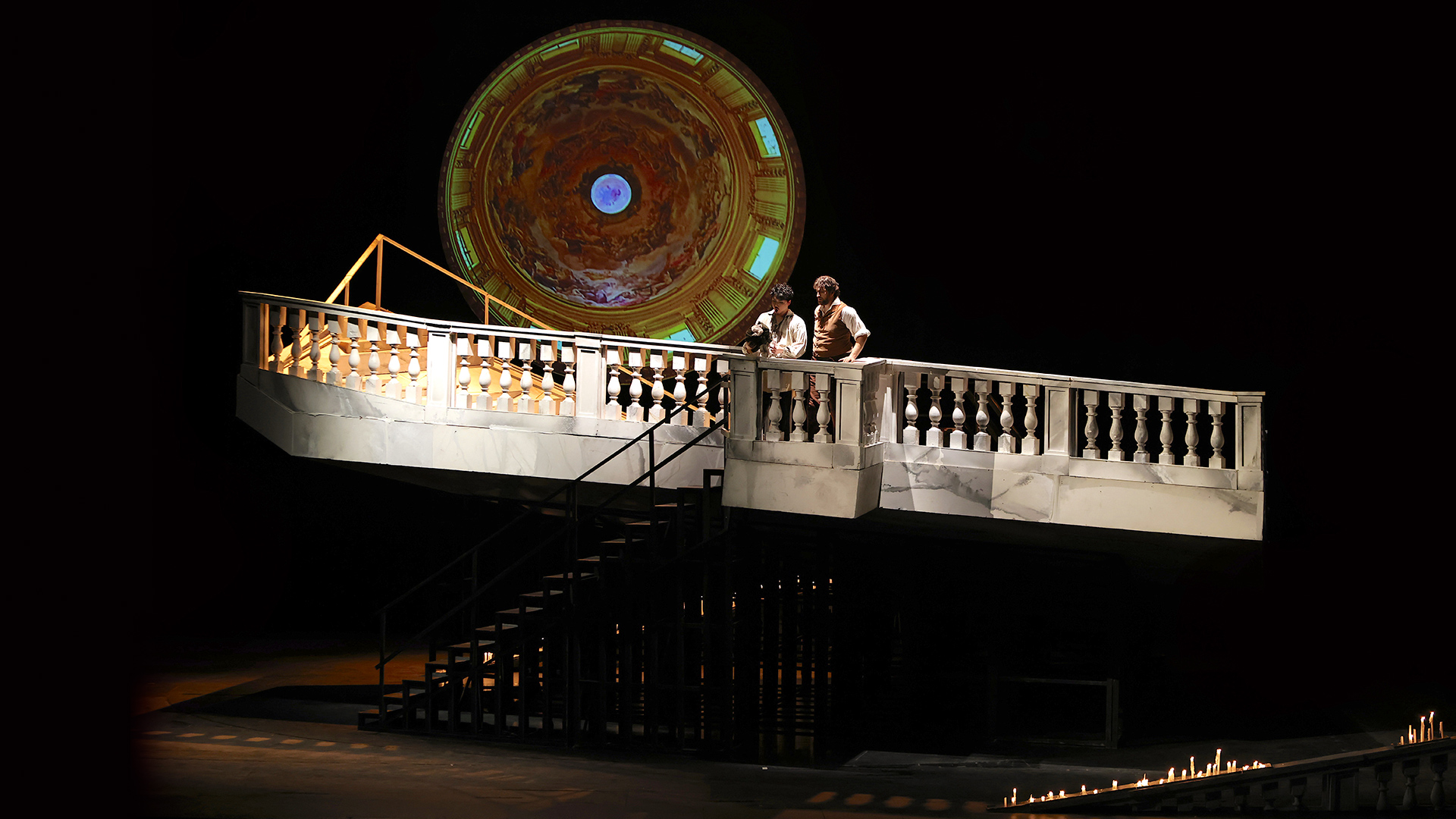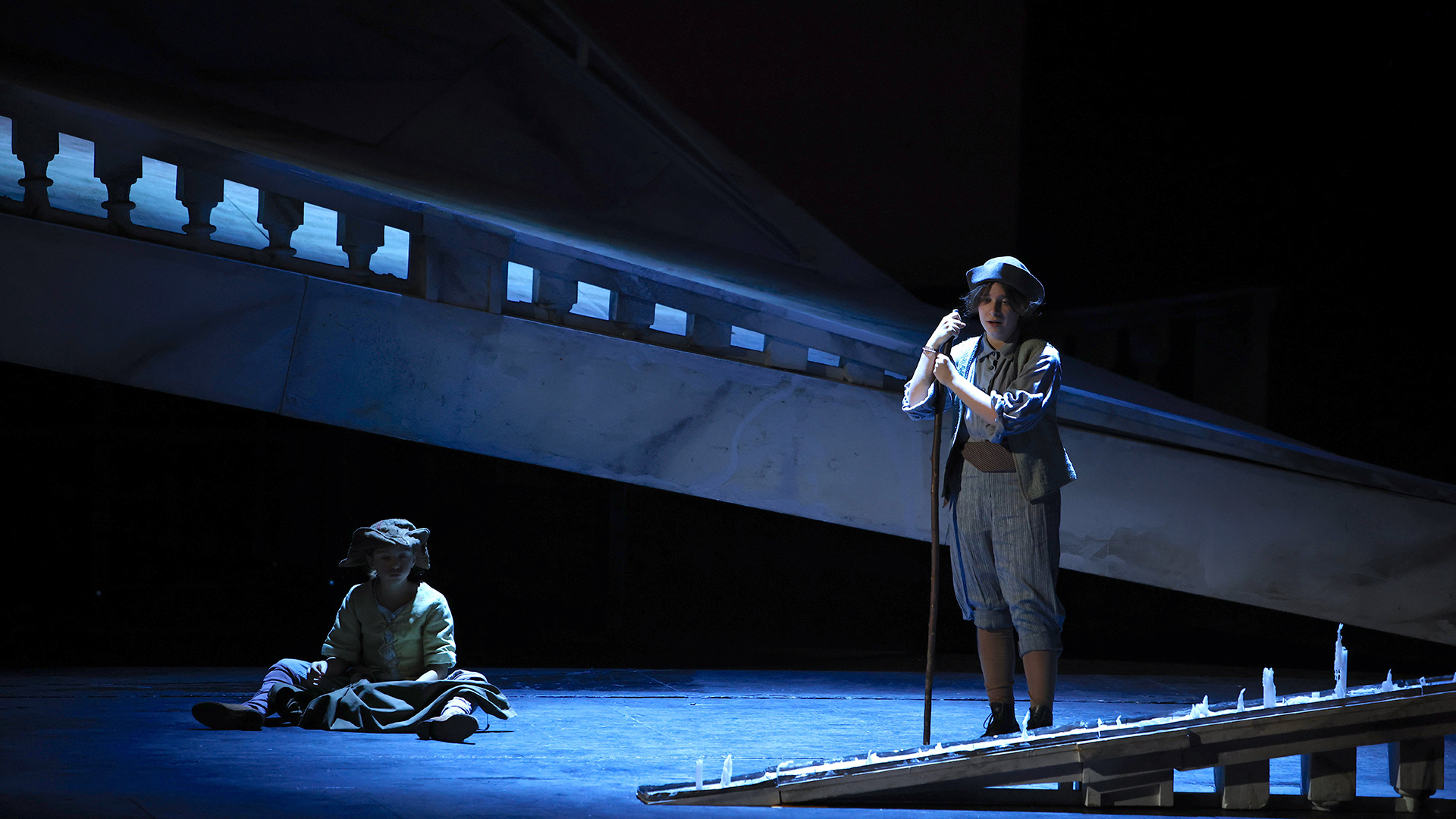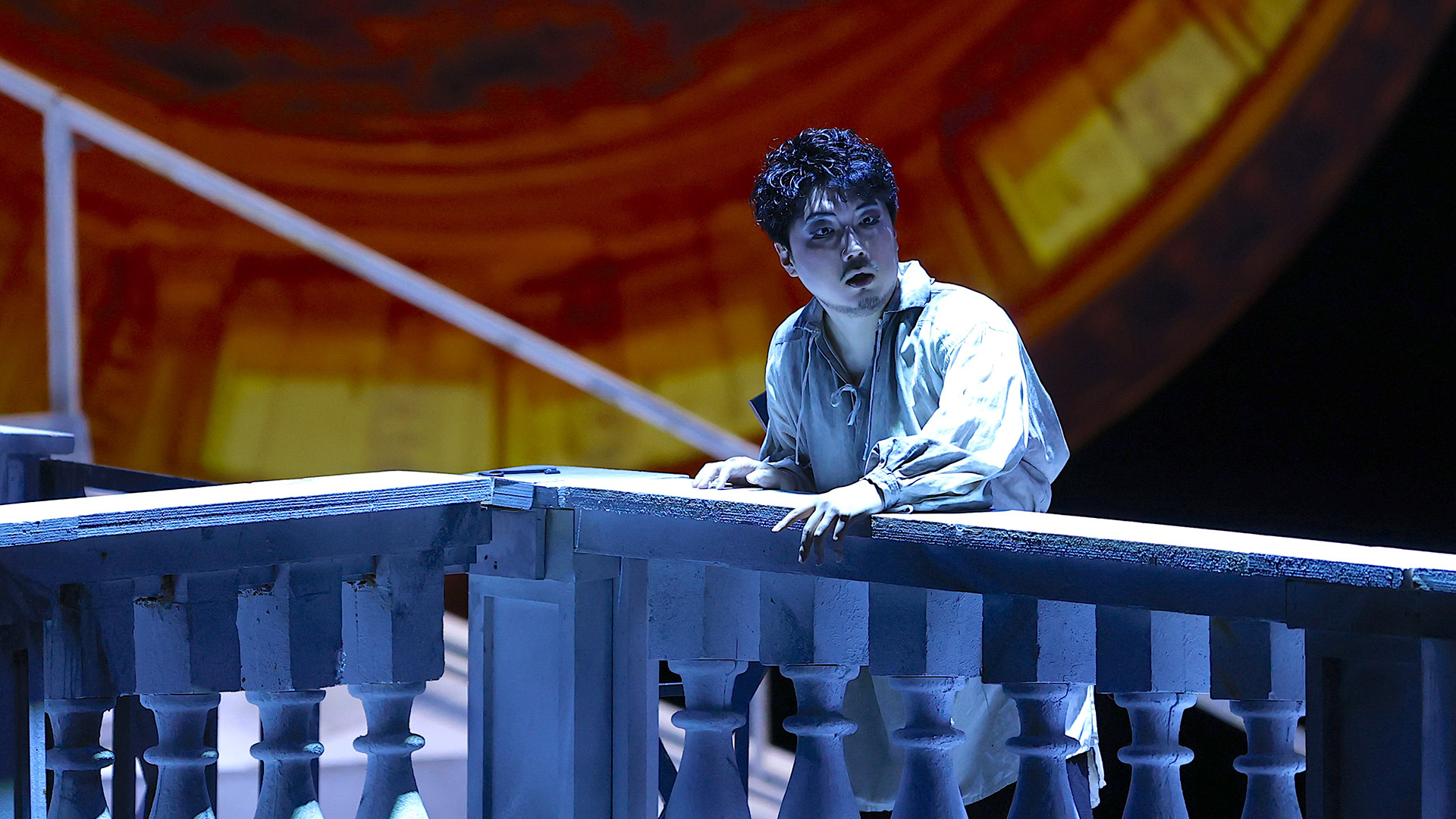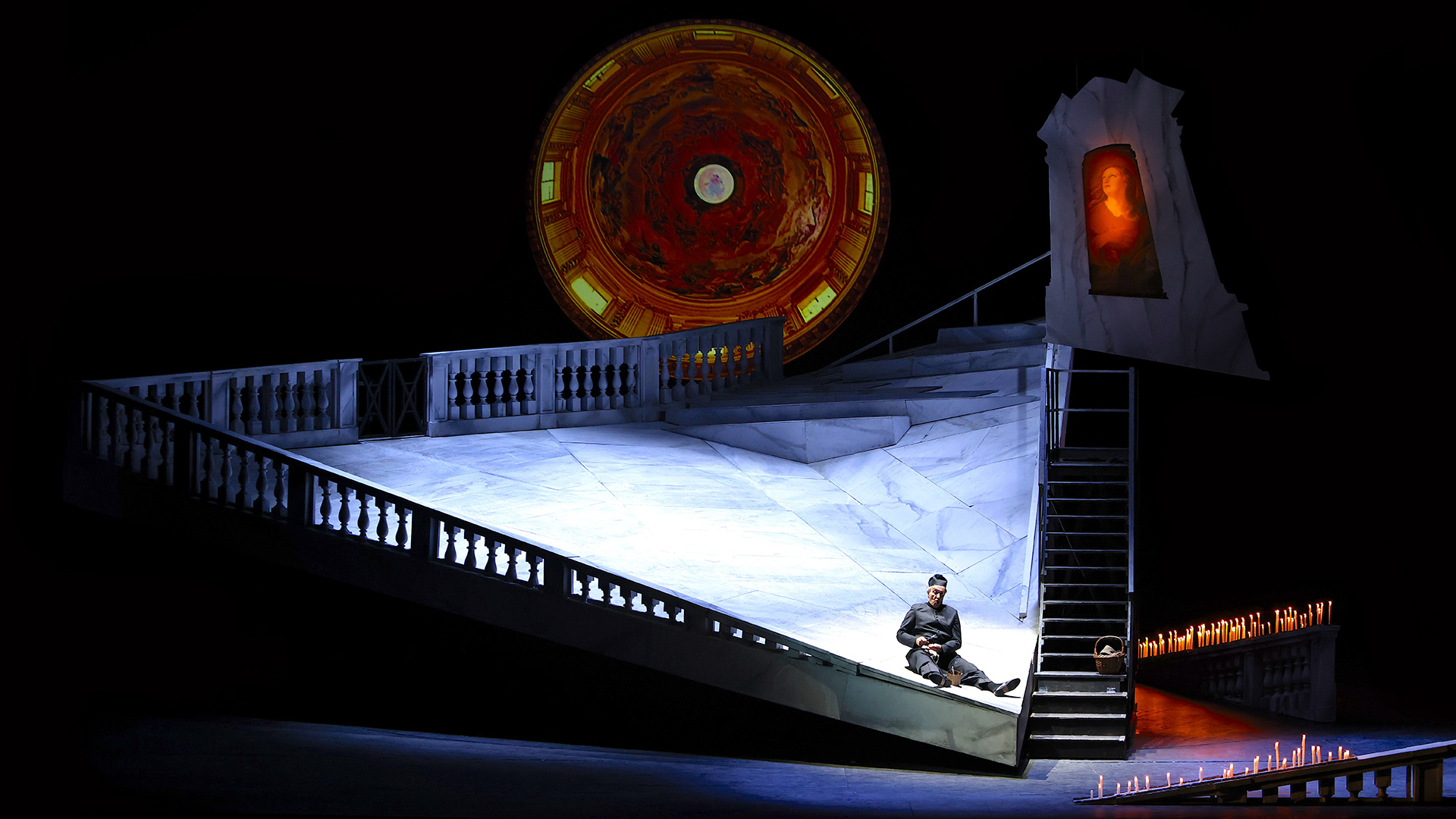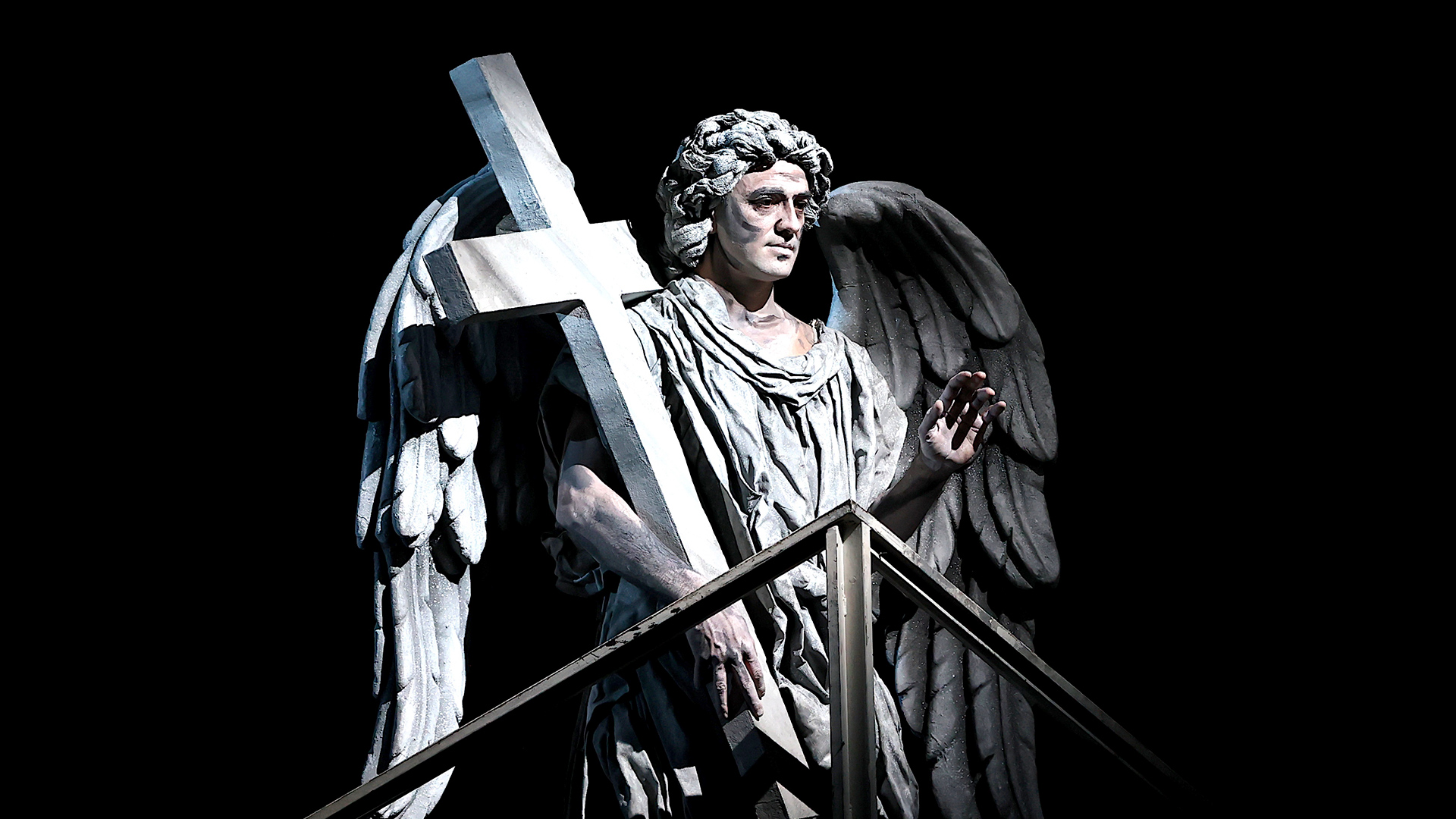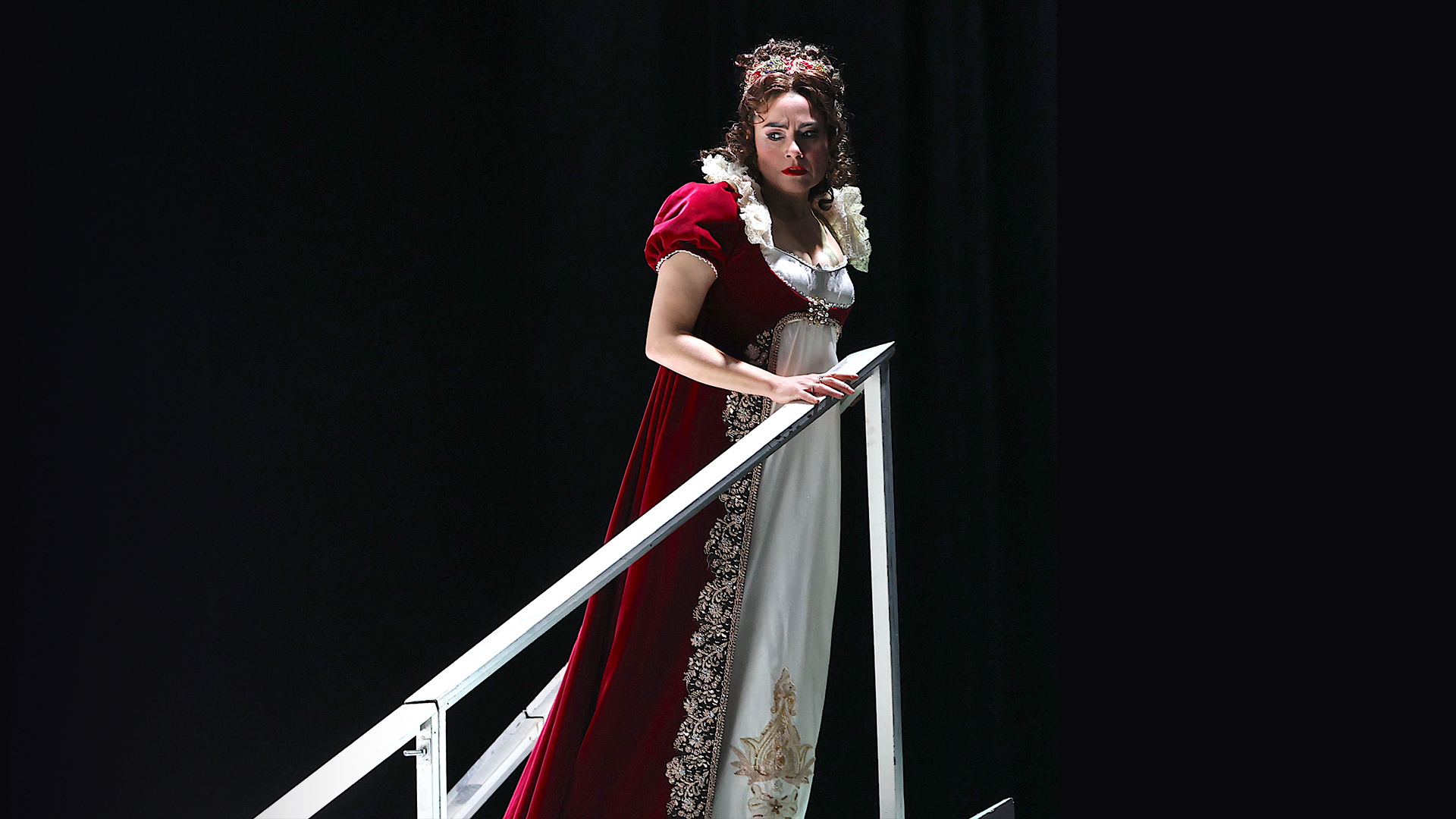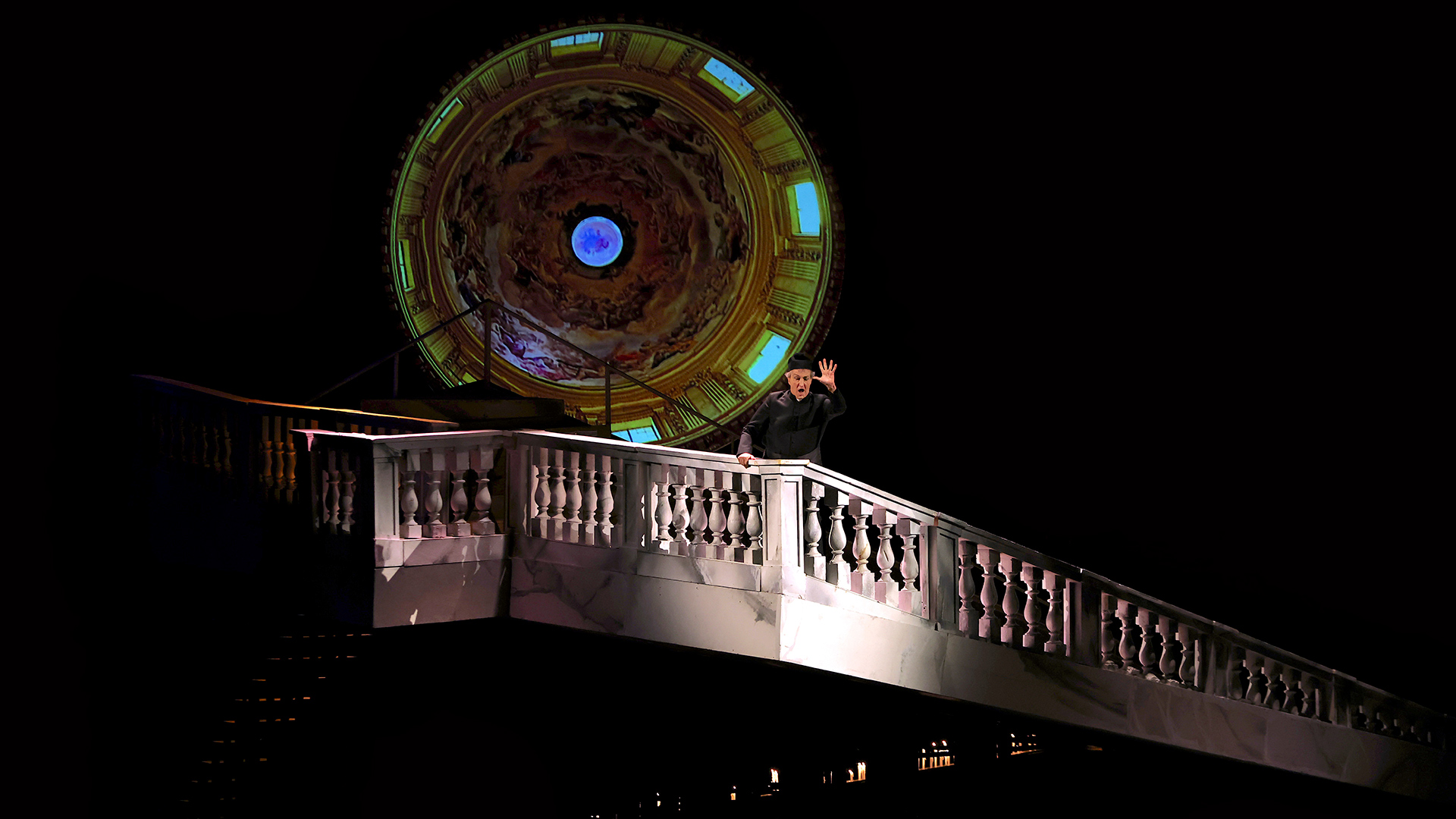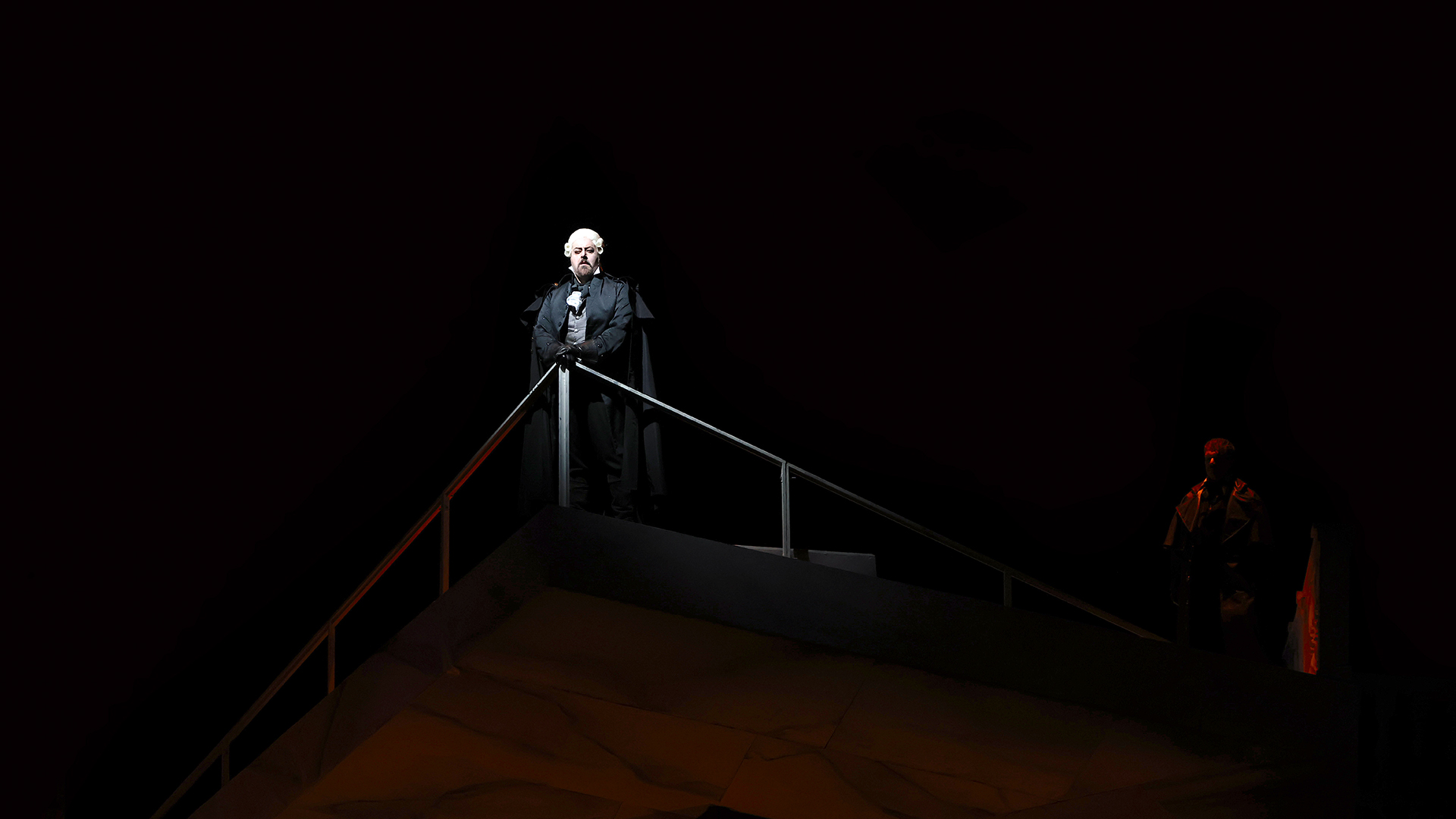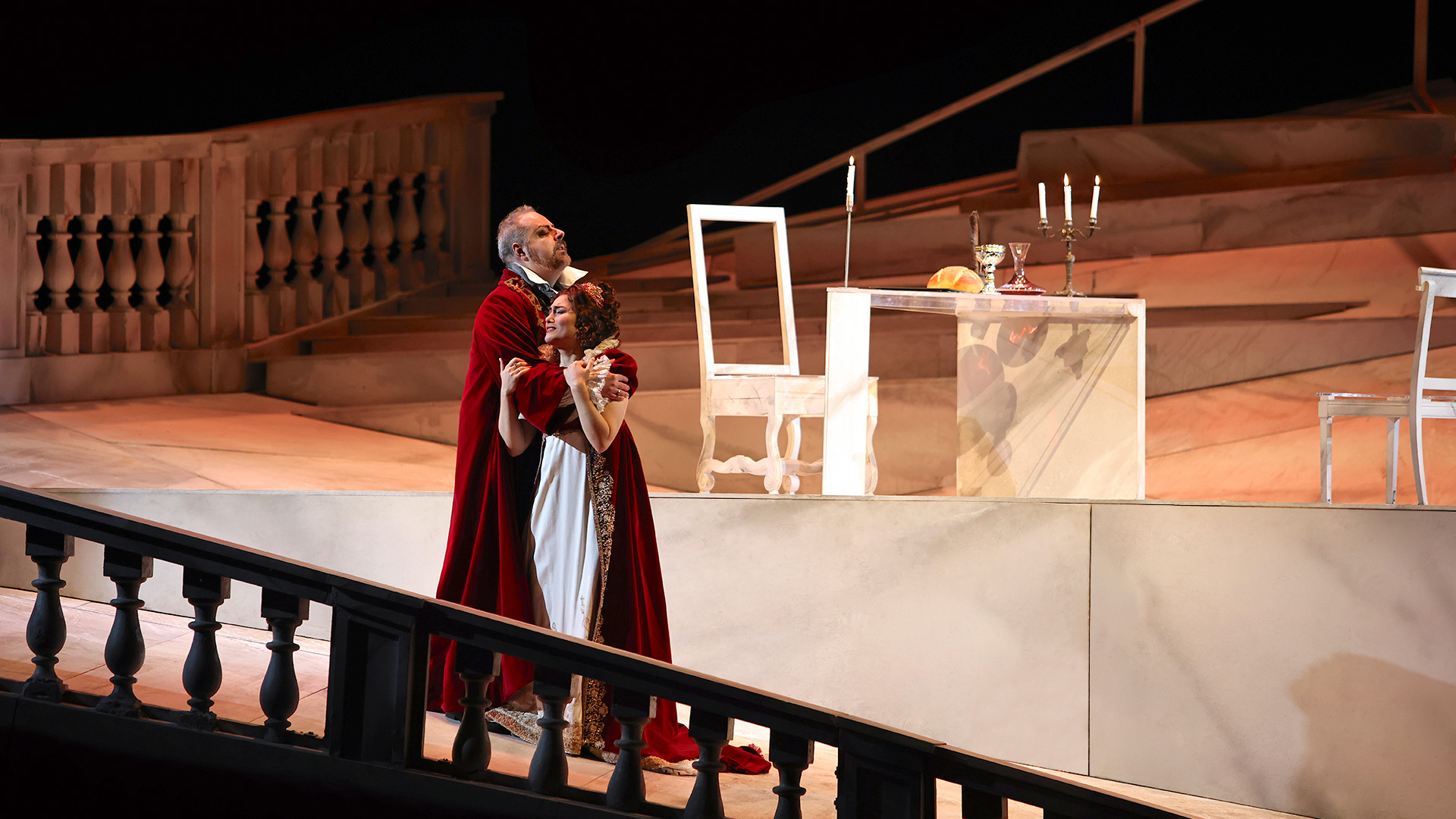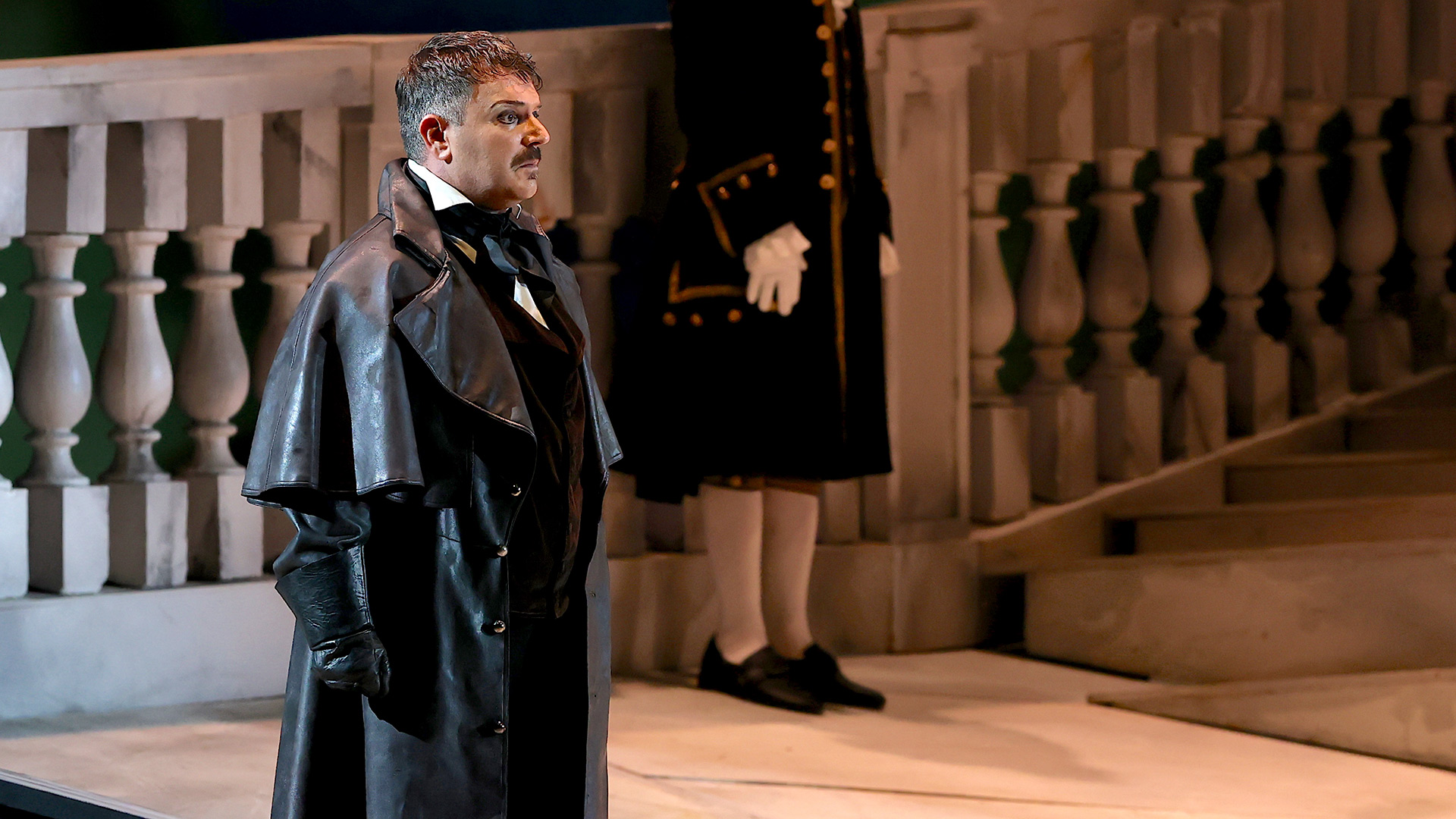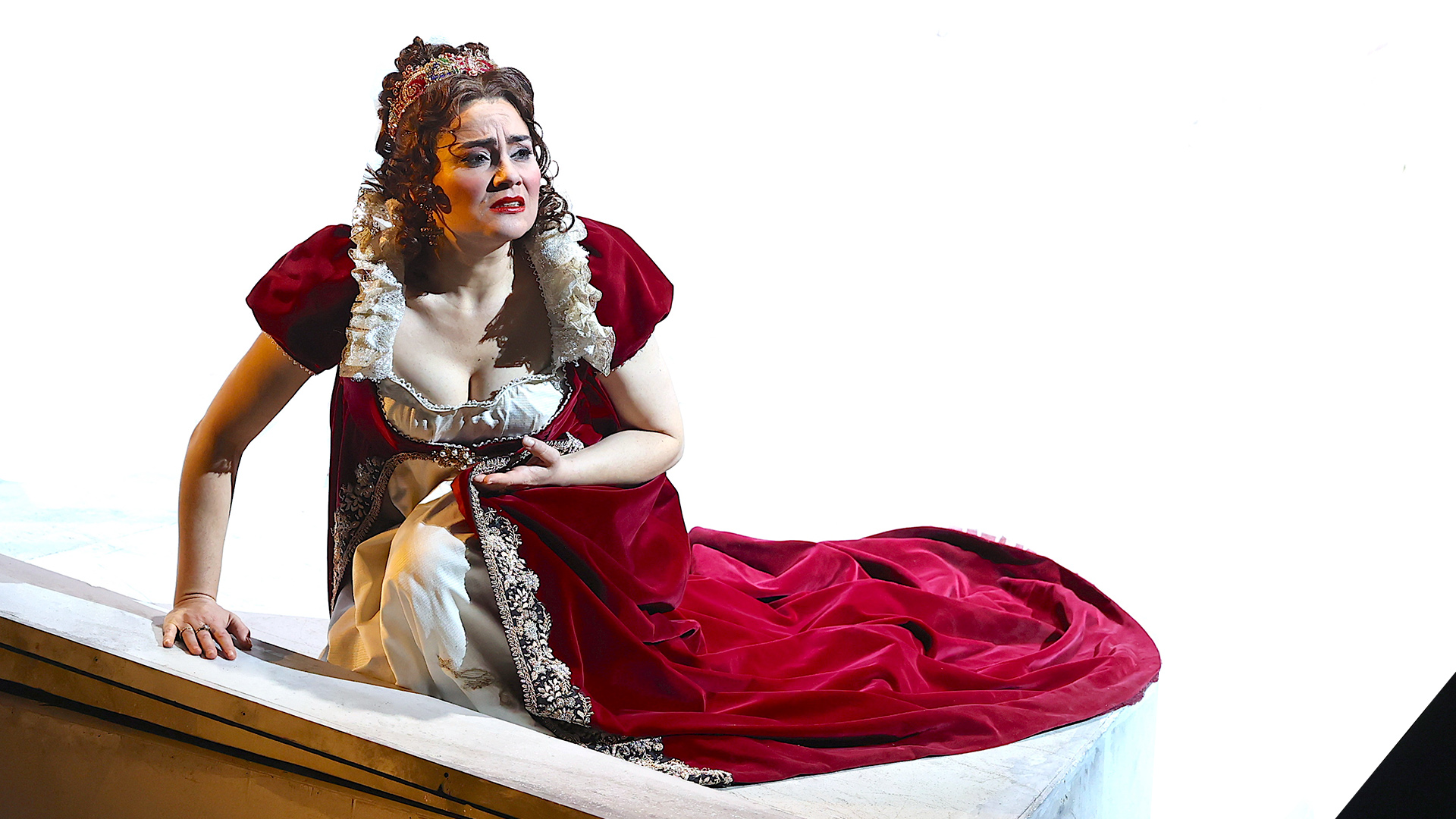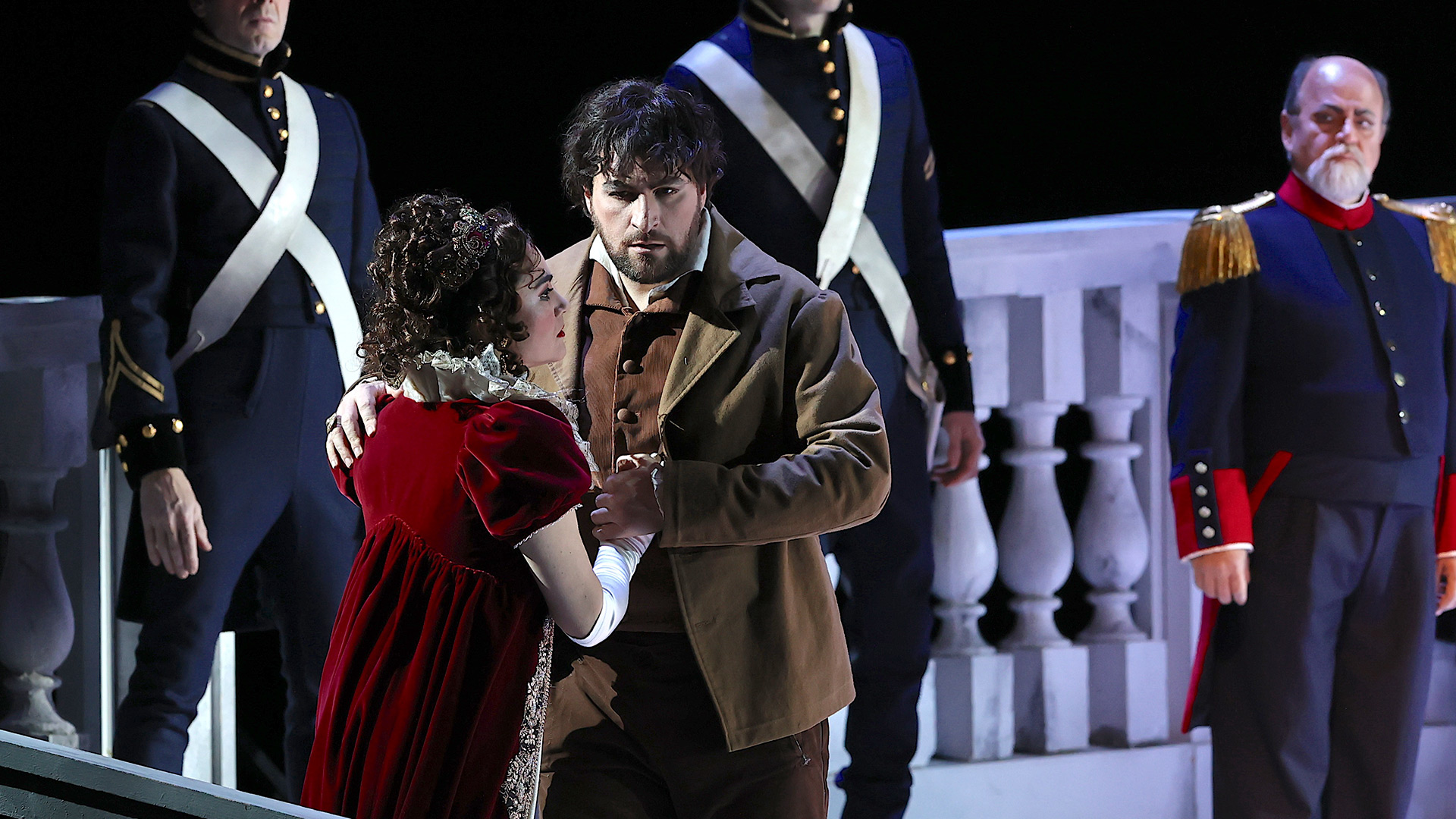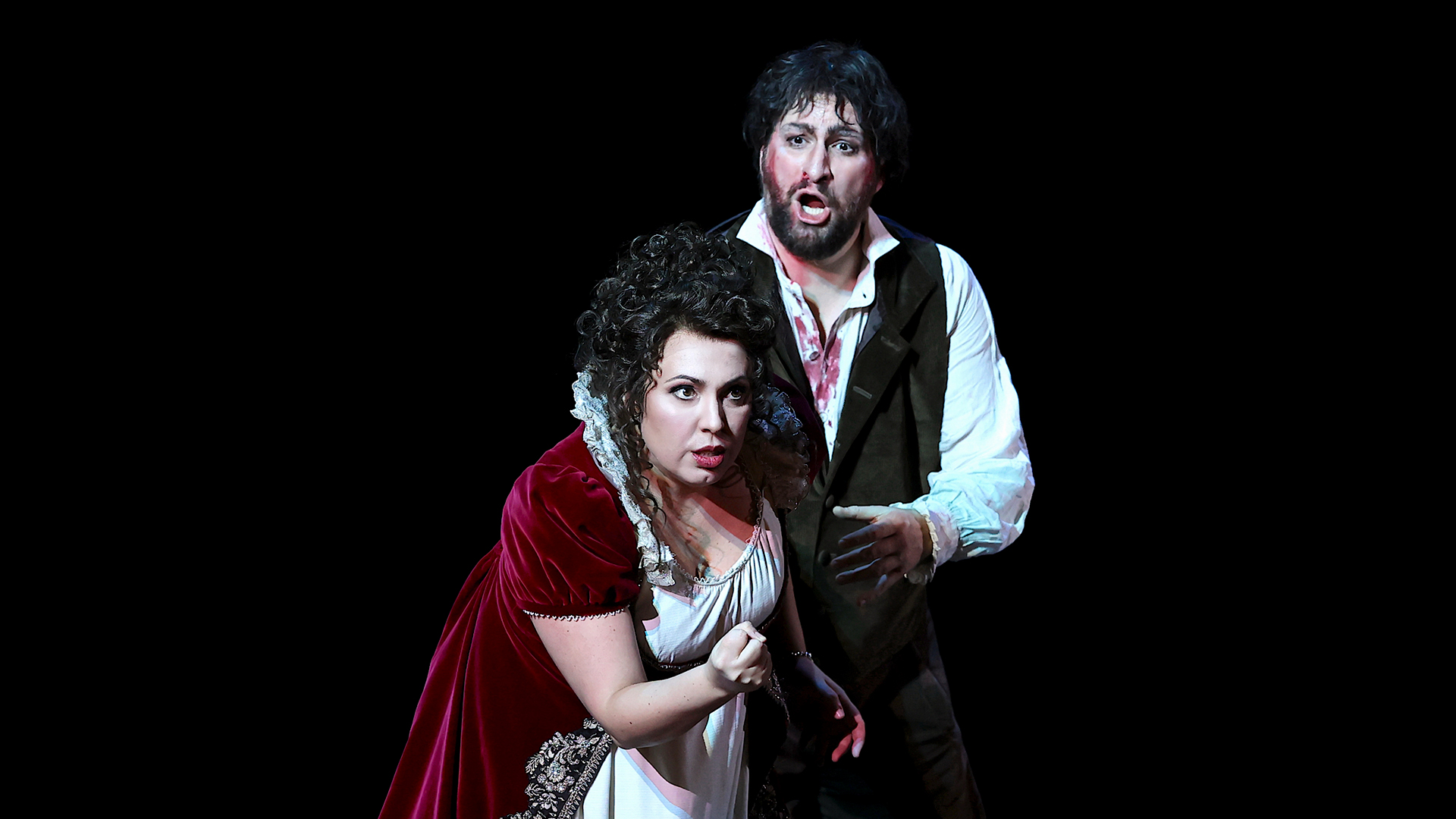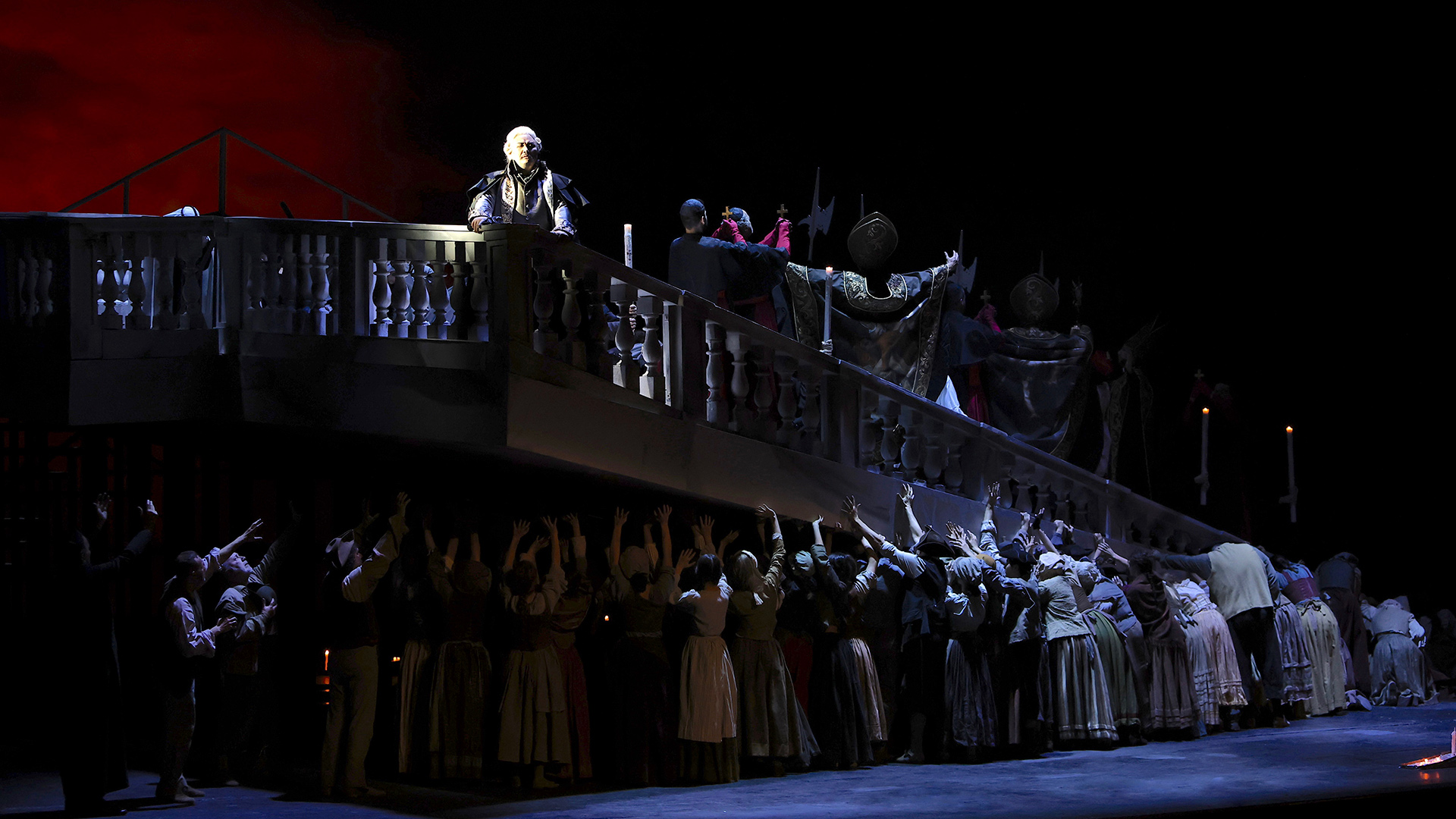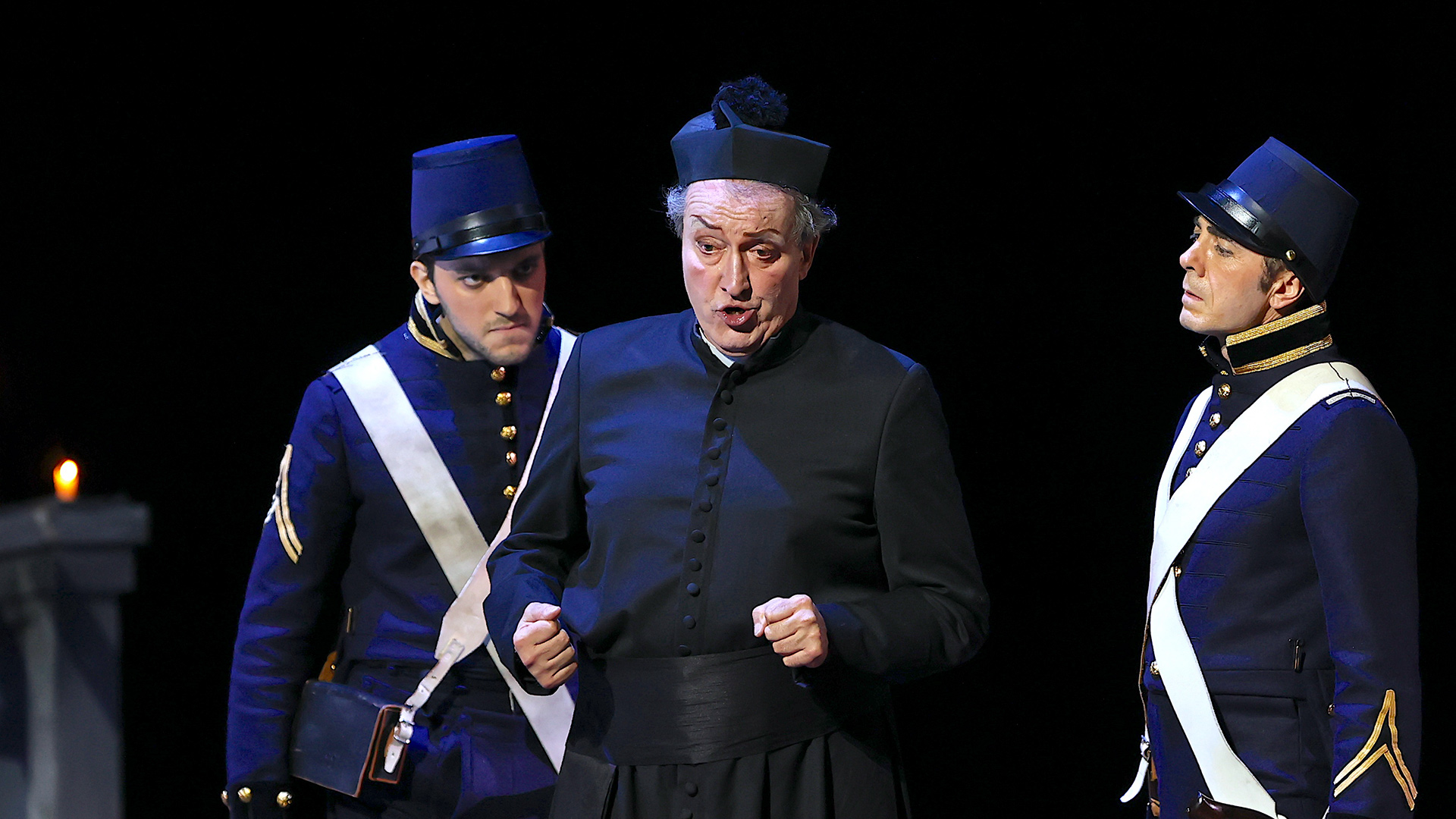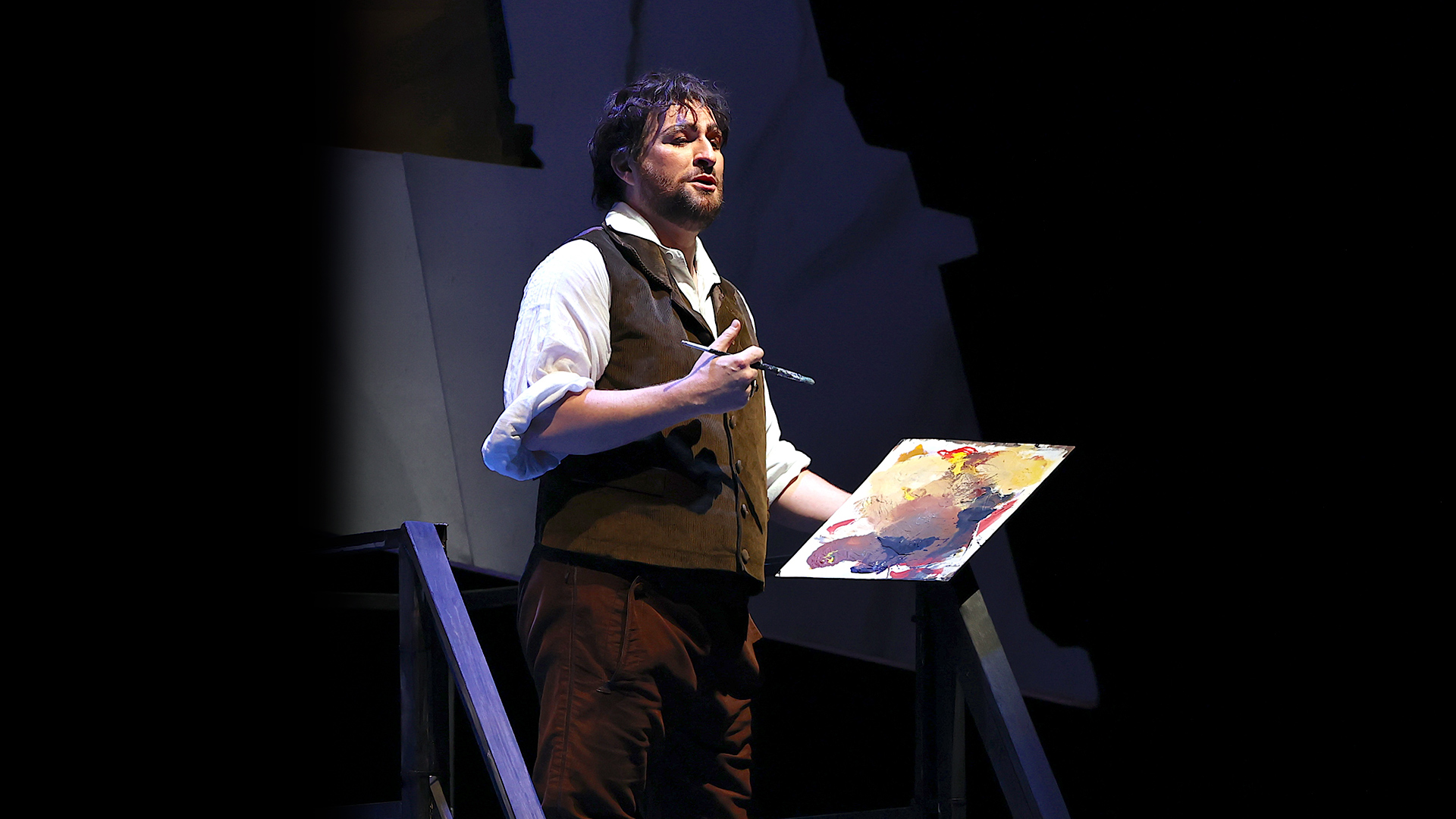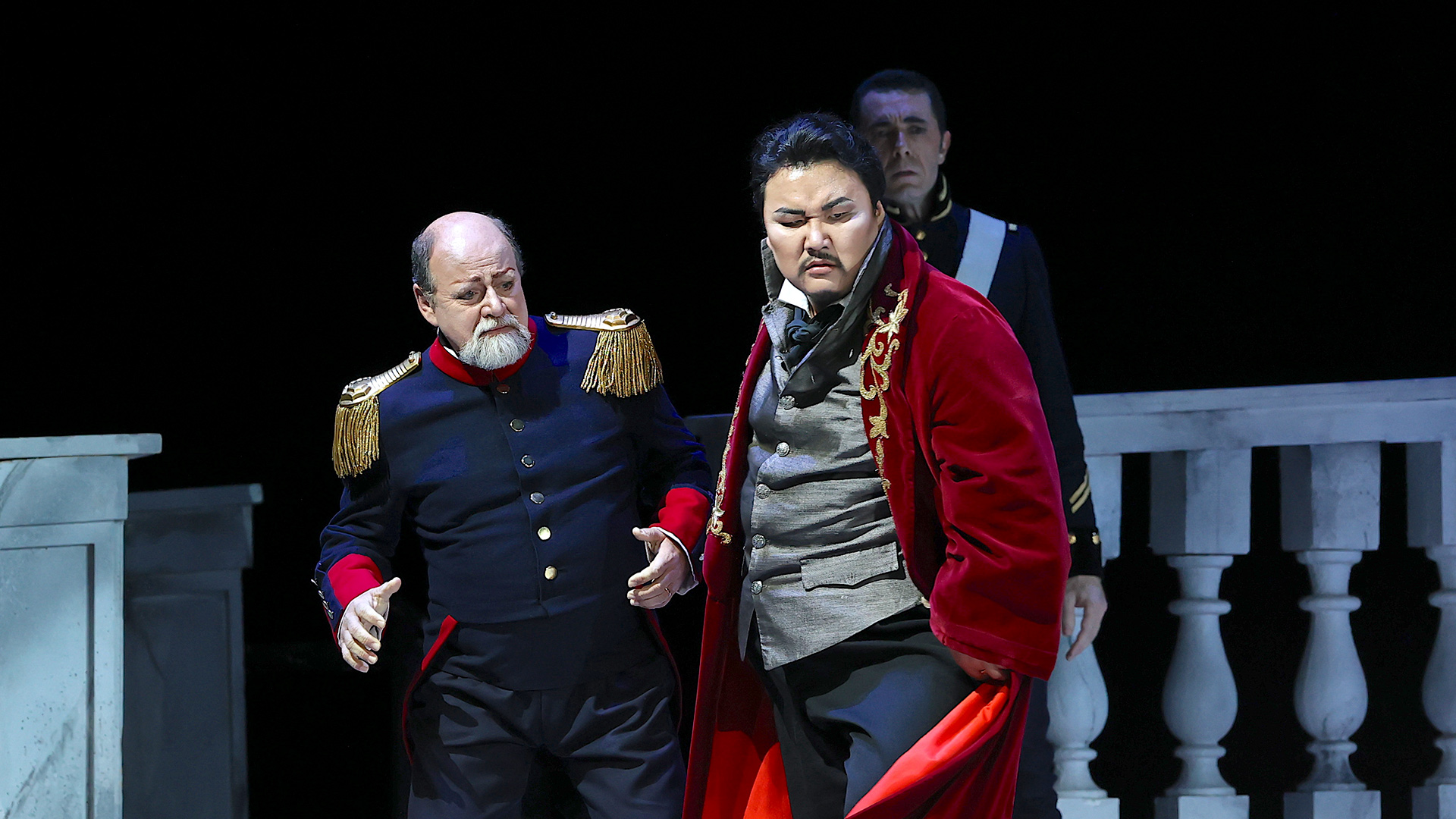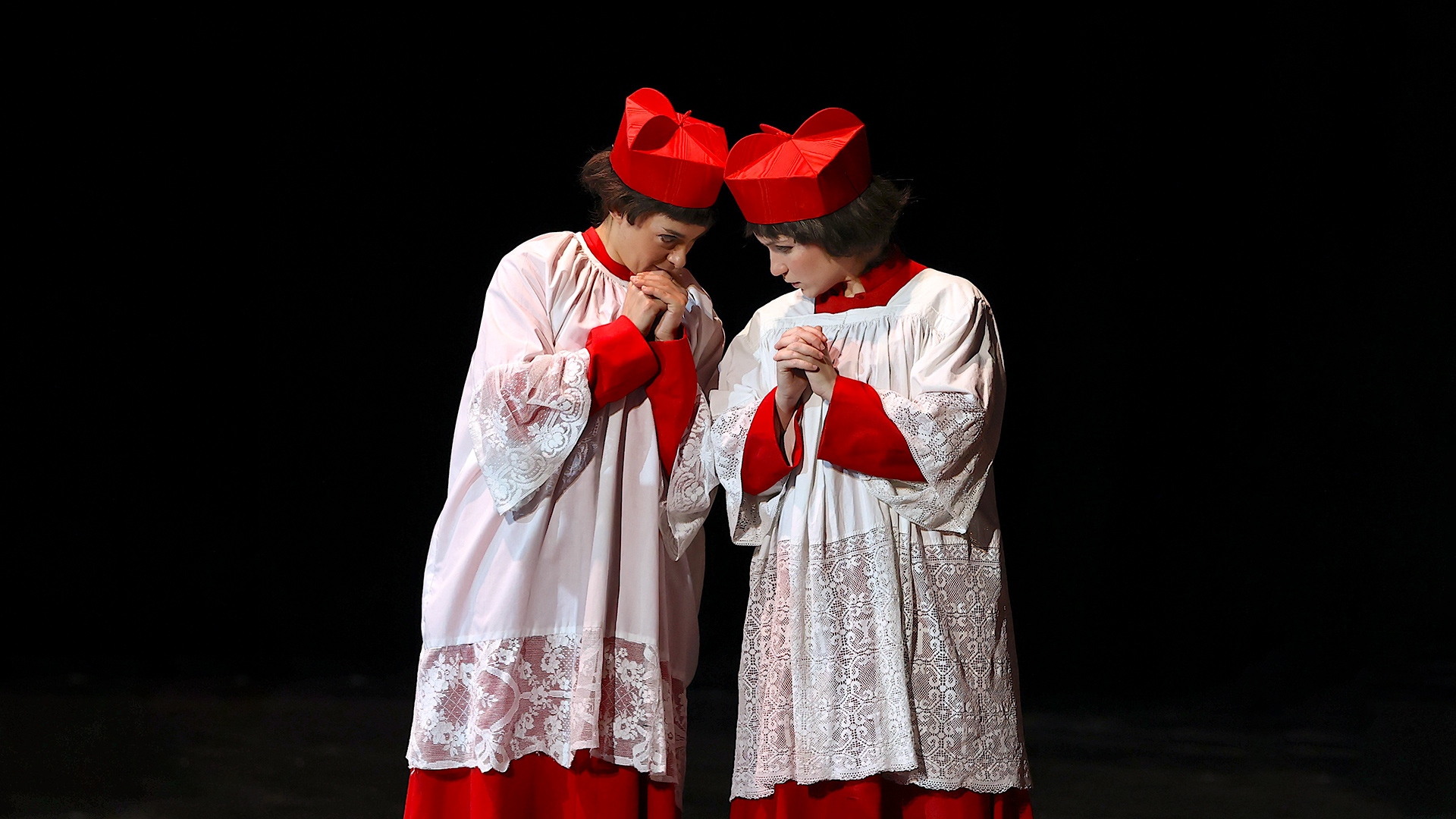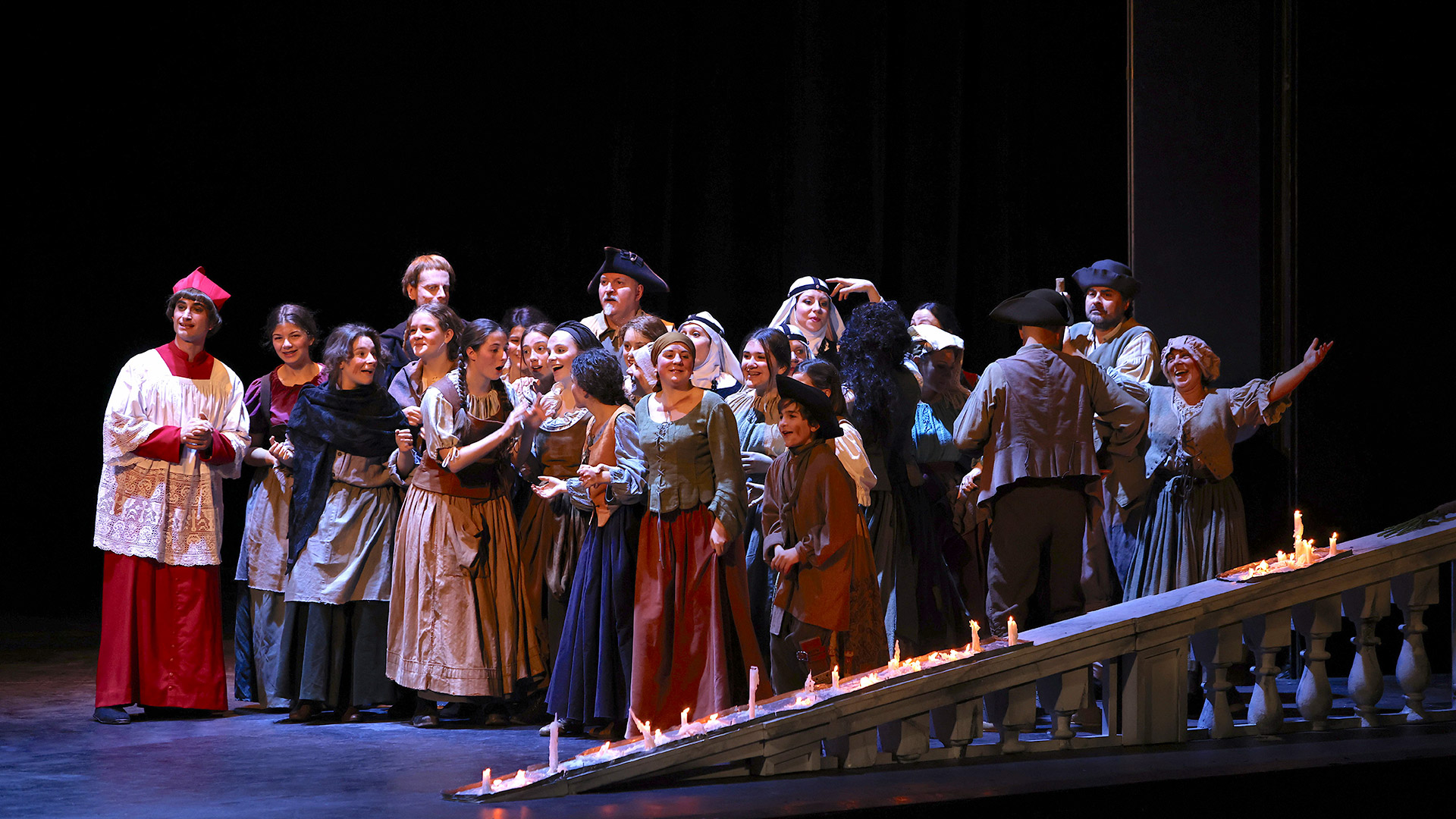Opera in three acts
Music by Giacomo Puccini
Libretto by Luigi Illica and Giuseppe Giacosa from the drama La Tosca by Victorien Sardou
PLAYBILL
Floria Tosca
Maria José Siri
Monica Zanettin (25, 4)
Oksana Dyka (3, 5)
Mario Cavaradossi
Riccardo Massi
Sergio Escobar (25, 4)
Scarpia
Amartuvshin Enkhbat
Stefano Meo (25, 4)
Angelotti
Dongho Kim
Sagrestano
Matteo Peirone
Spoletta
Manuel Pierattelli
Sciarrone
Claudio Ottino
A jailer
Franco Rios Castro
Roberto Conti (25, 4)
A pastor
Maria Guano (24, 26, 3)
Eliana Uscidda (25, 5)
Denise Colla (4)
Conductor
and orchestrator
Pier Giorgio Morandi
Director, scenic designer and lighting designer
Davide Livermore
Directed by Alessandra Premoli
Costume designer
Gianluca Falaschi
Staging
Fondazione Teatro Carlo Felice di Genova
Orchestra, chorus and Technicians
of Opera Carlo Felice Genova
chorusmaster
Claudio Marino Moretti
Children’s chorus
of Opera Carlo Felice
Children’s chorusmaster
Gino Tanasini
Staging director
Luciano Novelli
Stage musical director
Simone Ori
Répétiteurs
Sirio Restani, Antonella Poli
Stage musical assistants
Andrea Gastaldo, Anna Maria Pascarella, Silvia Gasperini
other Choir Master
Patrizia Priarone
Lighting Master
Bernardo Pellegrini
Supertitle Master
Simone Giusto
Head of musical archives
Simone Brizio
Scenic director
Alessandro Pastorino
Vice scenic director
Giorgio Agostini
Consolle supervisor
Andrea Musenich
Stage technicians foreman
Gianni Cois
Electrician foreman
Daniele Malcontenti
Tooling foreman
Tiziano Baradel
Audio/video foreman
Walter Ivaldi
Head of tailoring, shoemaking, make-up and wigs
Elena Pirino
Costume assistant
Nika Campisi
Make-up and hair co-ordinator
Raul Ivaldi
Scenes, costumes and props
Fondazione Teatro Carlo Felice – theOne
Footwear
theOne
Wigs
Mario Audello
Supertitles
Prescott Studio
The opera in brief
of Ludovica Gelpi
When the drama La Tosca, by French playwright Victorien Sardou, was staged at Milan’s Teatro dei Filodrammatici in 1889, it was Puccini himself who was particularly impressed, and contacted Casa Ricordi to agree to purchase the rights for the transposition to music. Following several setbacks, it was not until 1895 that Ricordi commissioned Puccini to write his Tosca, and the composer set to work in the spring of 1896. The libretto had already been partly prepared by Luigi Illica, in collaboration with Giuseppe Giacosa. The first staging took place a few years later, on January 14, 1900 at the Teatro Costanzi in Rome, soon meeting with great success, which led Tosca to be performed, within a few years, in many theaters around the world.
The fictional subject is inscribed in precise historical coordinates; in fact, the story takes place in Rome on Tuesday, June 17, 1800. The historical events of those days serve as the narrative centerpiece, for only a few days have passed since Napoleon’s victory at Marengo, the Roman Republic has fallen, and as a result the Papal States have recently been restored. It is these political upheavals that lead to the start of the action, with the escape of political prisoner Angelotti from the Castel Sant’Angelo prison. Painter and revolutionary Mario Cavaradossi becomes an accomplice of Angelotti, and ends up being himself arrested, tortured and finally executed by the terrible papal police chief, Scarpia. Floria Tosca, Cavaradossi’s singer and lover, finds herself involved in the political plot almost by accident; in fact, she is moved solely by the deep feeling that unites her with the painter, and she is used by the antagonist to capture Cavaradossi and to gain information. It is at the end of Act II that Tosca acts, again driven by her passion, and goes so far as to kill in order to save herself and her beloved. This is a story that is exciting precisely because the love story of Mario and Tosca is told thanks to and through well-defined historical and political events, to make the feelings of the protagonists almost tangible, which are very well characterized from a psychological point of view and also have a very significant development in a decidedly short narrative arc, which contributes greatly to the concussive pace and thus to the dramatic tension. Lighter elements, such as Tosca’s initial jealousy, or Scarpia’s lustful aims, are soon juxtaposed with developments of almost epic tragic significance. In a constant tension full of twists and turns, each of the protagonists goes to meet his or her fate. Angelotti, a man with a profound political vocation, takes his own life in the face of a world in which his political thinking seems to find no place; Scarpia dies because, blinded by lust and his own pride, he underestimates Tosca’s strength; Cavaradossi is treacherously executed for his two political ideas, but at the same time he dies unconscious and happy, convinced that he can live with his love; Tosca, finally, dies by choice, she chooses to die with Mario, she chooses love and her own freedom.
The musical structure of the opera also follows the dramaturgical tension; in fact, there are no clear separations between the moments of dialogue and the lyrical moments, rather a continuum, in which the thematic motifs associated with each character, which change form continuously, are woven together with great cohesion, and constitute a true musical dramaturgical layer. The harmonic writing reaches almost experimental moments, with no shyness in the use of dissonances with an almost expressionistic tone in the moments of greatest turmoil on stage. Puccini’s melodic talent is then an obvious element; some of Tosca’s romances, particularly “Recondita armonia,” “Vissi d’arte” and “E lucevan le stelle,” have enjoyed and still enjoy incredible fame.
It is therefore Tosca a title with a great innovative charge, in which Puccini yes draws inspiration from melodrama, for example from the last Verdi, but represents it in a new dimension, rich in various influences and reworked in his own way, actually going to open the door to a new conception of musical theater, the one that would develop from the early twentieth century onward, in a completely new direction.
